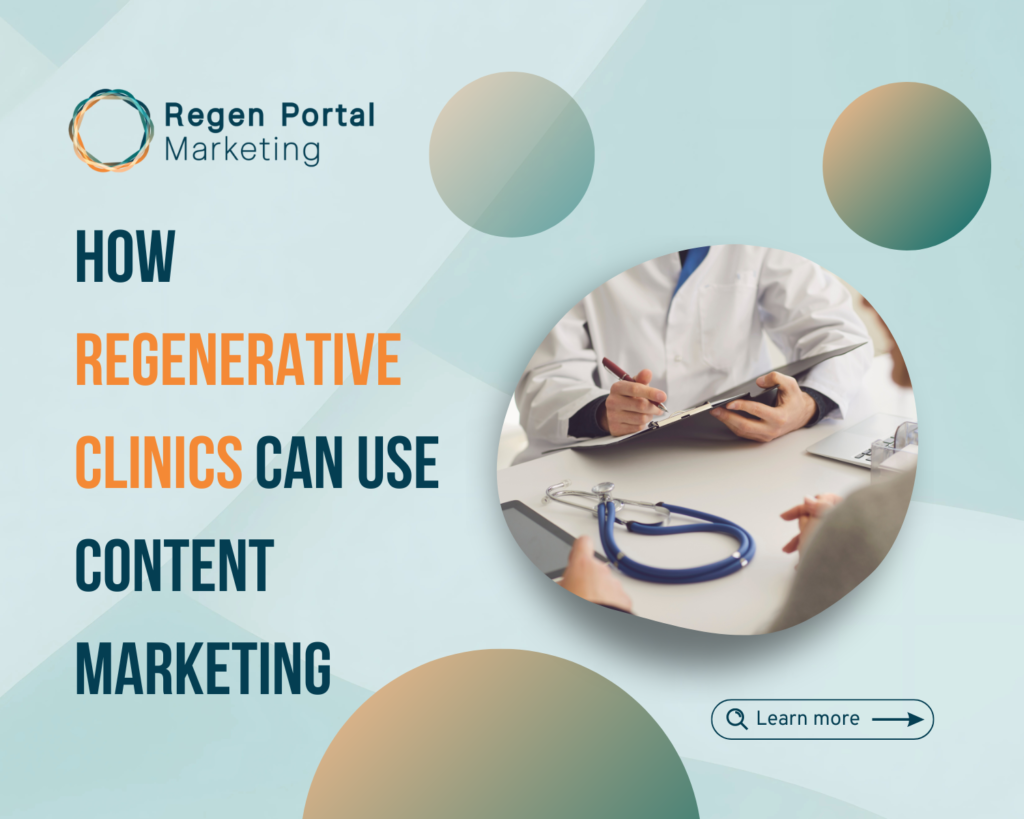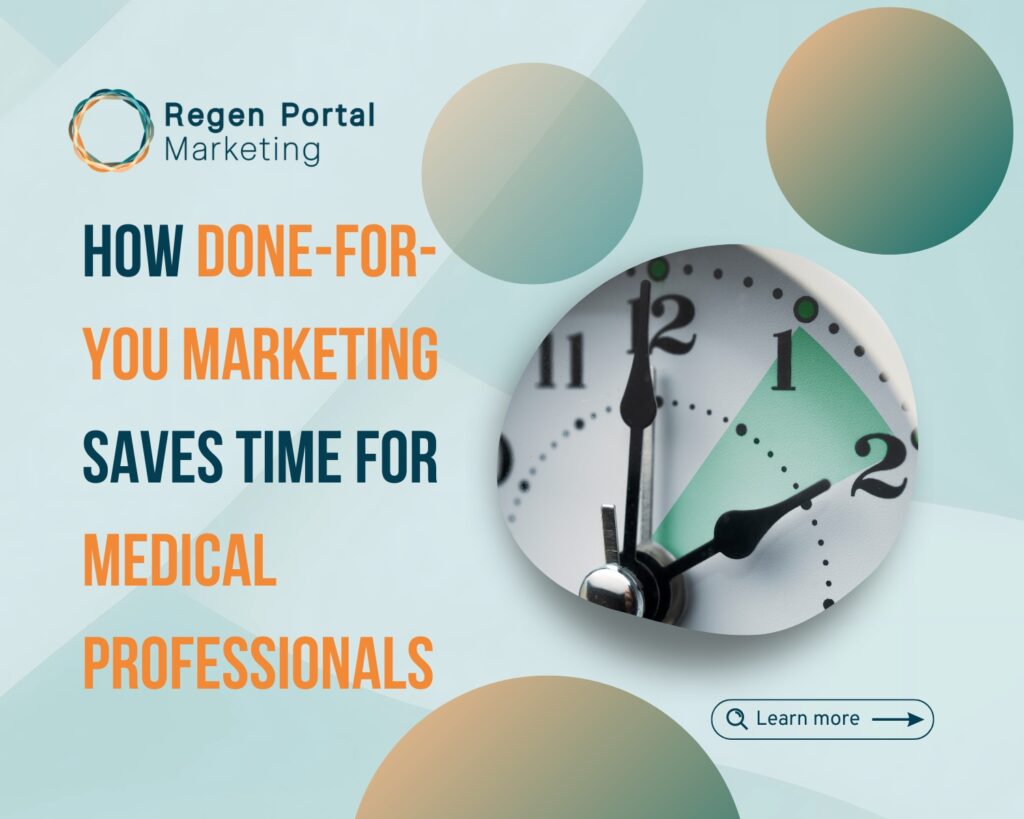How Retargeting Ads Help Regenerative Clinics Stay Visible to Potential Patients
You’re driving traffic to your website. You’ve invested in blog content, search visibility, and maybe even paid ads. But most visitors leave without booking an appointment—and don’t come back.
Sound familiar?
Regenerative medicine clinics face a unique challenge: patients often need time to consider treatment options. They may visit your website, read about PRP or stem cells, and then pause—to research, ask a friend, or just think it over. Without follow-up, those potential patients vanish.
This is where retargeting comes in.
While professional SEO services help bring visitors to your site in the first place, retargeting helps keep your clinic top-of-mind after they leave. In this blog, we’ll walk you through what retargeting is, how it works, and how your clinic can use it—ethically and effectively—to re-engage future patients.
What Is Retargeting and How Does It Work?
Retargeting (also called remarketing) is a form of digital advertising that shows your clinic’s ads to people who have already visited your website or engaged with your content—but didn’t take action.
Here’s how it works in simple terms:
- A patient visits your website and reads about a treatment like PRP for knee pain.
- They leave without filling out a form or booking an appointment.
- Later, while browsing Facebook or another site, they see an ad from your clinic—reminding them of the service they viewed.
- That ad brings them back when they’re more ready to act.
Retargeting ads are powered by tracking tools (like the Facebook Pixel or Google Tag), which anonymously record site visits and trigger relevant ads later.
It’s not about spamming—it’s about staying visible to people who’ve already shown interest.
When paired with professional SEO services, retargeting creates a one-two punch: organic search brings traffic in, and retargeting nurtures those leads until they’re ready to convert.
Retargeting vs. Cold Advertising: What’s the Difference?
If you’ve run digital ads before, you’ve likely done cold advertising—targeting people who have never heard of your clinic.
Examples include:
- Promoting a blog post to a broad audience
- Targeting users by age or location who haven’t interacted with your site
- Running search ads for general keywords like “stem cell therapy near me”
Cold ads are useful for reaching new audiences—but they often have lower click-through and conversion rates because there’s no existing relationship.
Retargeting ads, on the other hand, are designed for warm audiences—people who’ve already:
- Visited your website
- Watched your treatment videos
- Clicked a link in an email
- Followed your social media page
These users are more likely to take action because they’re familiar with your brand. That’s why retargeting ads tend to cost less per conversion and drive more efficient results.
When combined with professional SEO services, retargeting helps you make the most of every site visit—maximizing ROI without constantly chasing new traffic.
Retargeting for Regenerative Clinics: Real-World Examples
So how can regenerative practices use retargeting in real life? Here are two of the most common—and effective—approaches:
1. Facebook Retargeting Ads
Use Meta’s tools to retarget people who:
- Visited your website
- Watched your treatment videos on Facebook or Instagram
- Engaged with a post or ad
Example:
A patient watches 50% of your video titled “What to Expect from PRP Therapy.” Three days later, they see a follow-up ad with a patient testimonial and a call to schedule a consult.
This kind of sequential storytelling builds trust and increases the likelihood of a return visit.
2. Google Display Network Retargeting
Google’s vast display network allows you to show visual banner ads on thousands of websites—including health blogs, news sites, and local media outlets.
Example:
A visitor reads your blog on “Avoiding Knee Surgery with Stem Cell Injections.” A week later, they’re reading an article on WebMD and see your ad offering a downloadable treatment guide.
It’s a soft reminder—but it works. Especially when paired with long-term visibility from professional SEO services, which brought them to your blog in the first place.
Best Practices for Healthcare Retargeting (and Staying Compliant)
Healthcare marketing comes with unique responsibilities, especially when it involves patient data or privacy. Retargeting can be effective—but it must be done carefully and ethically.
✅ Stick to Educational and General Messaging
Avoid using language that references a patient’s specific medical history or behavior.
Good: “Still exploring PRP therapy? Download our free guide.”
Avoid: “We noticed you visited our back pain page—here’s your next step.”
✅ Don’t Use Retargeting for Sensitive Conditions
In some cases (like mental health or addiction treatment), retargeting could violate ad policies or ethical standards. Always consider the sensitivity of the treatment and your local regulations.
✅ Review HIPAA Compliance
While retargeting pixels don’t collect personal health data directly, combining multiple data points could create privacy concerns. Use anonymized data only, and consult with a legal advisor if needed.
Following these best practices ensures that your retargeting efforts align with both industry standards and your clinic’s values.
Key Performance Metrics to Track Your Retargeting Success
To measure how well your retargeting campaigns are working, monitor these metrics:
- Click-Through Rate (CTR):
How often people click your ad after seeing it. - Conversion Rate:
How many clicked and then booked, downloaded, or contacted your clinic. - Cost Per Conversion:
How much you’re paying for each successful outcome (like a form submission or appointment request). - Frequency:
How often each user sees your ad. Too much frequency can lead to ad fatigue—too little, and your message may be forgotten.
When retargeting is supported by professional SEO services, your marketing becomes a full-cycle system: SEO drives qualified traffic, and retargeting closes the loop.
Retargeting + SEO: A Winning Combo for Clinics
Here’s why retargeting works even better when it’s layered on top of a strong SEO foundation.
- SEO brings in high-intent traffic—people searching for things like “PRP for knee arthritis” or “regenerative medicine near me.”
- Retargeting turns those visits into repeat exposures—bringing people back after they’ve left.
- Together, professional SEO services and retargeting increase your visibility, improve conversions, and stretch your marketing dollars further.
It’s not about chasing cold leads. It’s about continuing the conversation with people who already showed interest.
Conclusion: Stay Visible and Stay Relevant with Retargeting
Patients researching regenerative treatments need time—and trust—before making a decision. With the right strategy, you can stay visible throughout their journey.
While professional SEO services bring new visitors to your site, retargeting helps you stay top-of-mind with the ones who aren’t ready to book yet. When done ethically and strategically, it’s one of the most efficient ways to maximize your marketing investment.
The key is to:
- Use retargeting to reconnect with warm audiences
- Follow compliance guidelines for safe, responsible advertising
- Track performance to refine and improve your campaigns
- Integrate your efforts with your overall digital strategy
Want a Smarter Way to Retarget Patients?
If you’re ready to build a patient-focused retargeting system that works alongside your professional SEO services, Regen Portal Marketing is here to help.
👉 Let’s talk about creating a campaign that keeps your clinic visible and brings patients back. Visit Regen Portal Marketing today.



